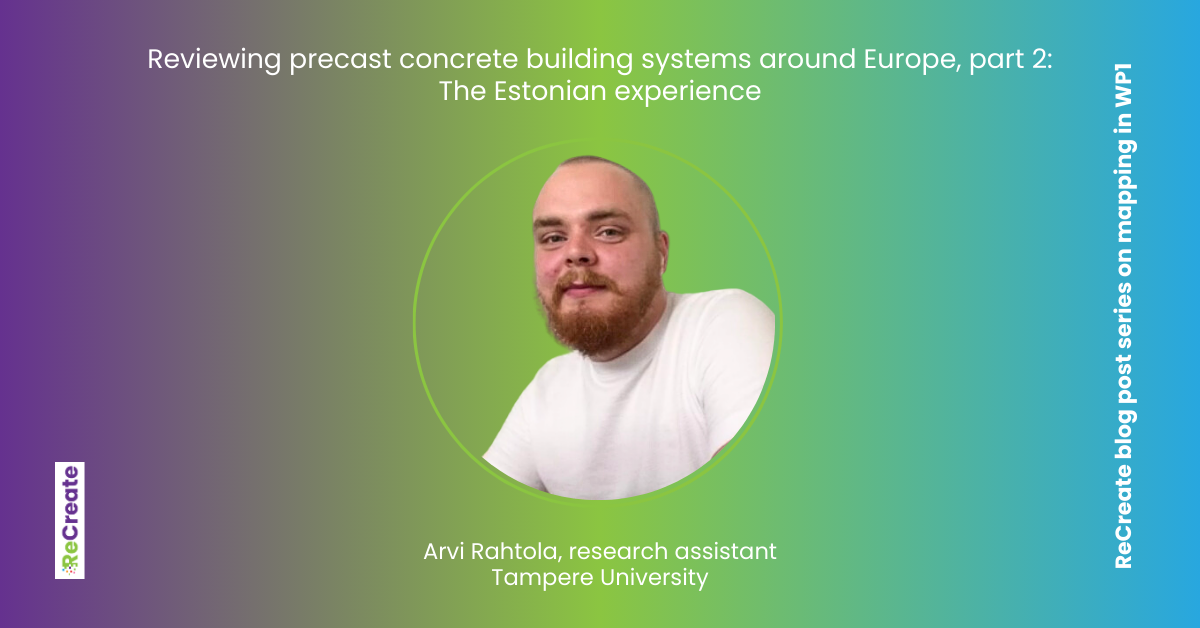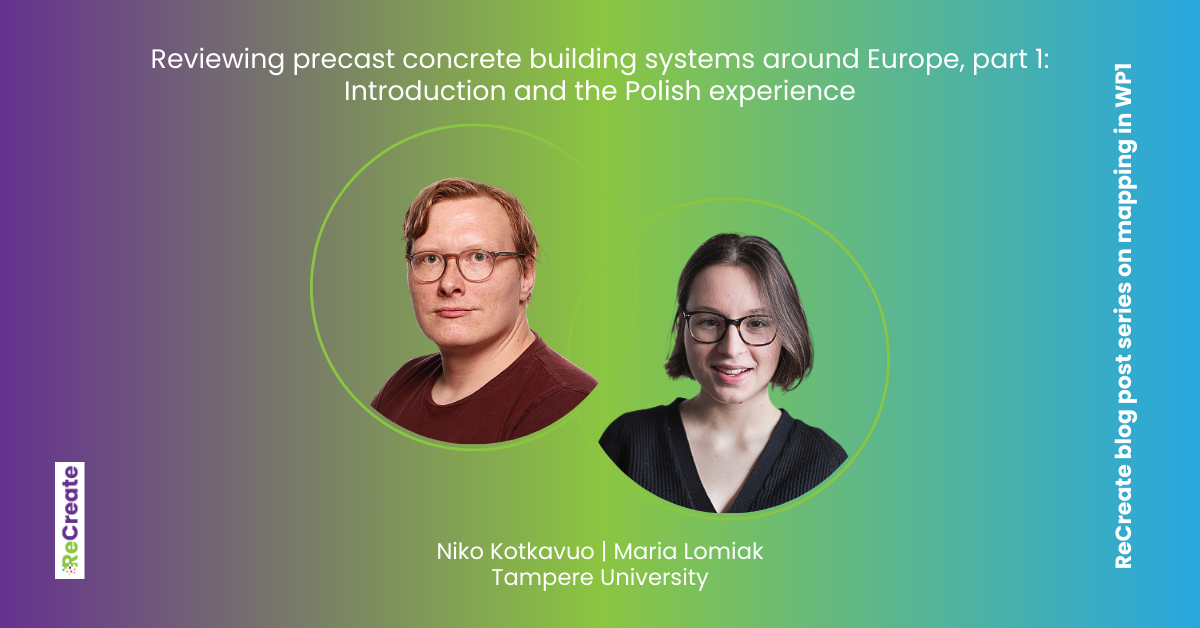ReCreate blog post series on mapping in WP1
Post 2
Author: Arvi Rahtola, research assistant, Tampere University
To gain a broader perspective on the possibilities of reuse and ease knowledge and technology transfer across borders, one of the goals in the ReCreate project is to gather data on precast systems from various European countries. The work is not limited to the four pilot countries of the project (Finland, Sweden, the Netherlands and Germany), but also includes a selection of eastern EU member states known to have large stocks of precast concrete buildings. Beside residential building systems, the ones used in non-residential construction are of interest as well. This blog post series describes that experience. Please find here Part 1 of the series, which explains the nature of this work and describes the Polish experience. The current blog will discuss the Estonian experience, while the series will continue with Romania and Finland later on.
The Estonian experience
Master’s student of architecture Arvi Rahtola joined the ReCreate research team at Tampere University as a research assistant for a ten-week sprint in the summer of 2024, with guidance provided by project researcher Niko Kotkavuo, to collect material on the precast building systems of Estonia. This blog gives the personal account of his involvement and the challenges he encountered while studying the systems:
Challenges with mapping Estonian Soviet concrete construction systems were mainly related to the country’s rather small size. When country is so small that in most fields everybody knows everybody by name, very few things are written down. As a starting point, the available Estonian sources were mainly blogposts, old news articles, or commercial publications on insulating existing residential buildings. Even though the initial material was narrow, it led me to archives, which turned out to be well organized and easy to access.
Finding enough material didn’t turn out to be a problem. The design bureau responsible for designing most Soviet prefabricated housing left behind a large amount of records. Some type building series had over 200 folders of material to go through. The information I was looking for was hiding in four or five of them. Additionally, some of the archived material had unfortunately deteriorated to the point of uselessness. The main challenge turned out to be locating the relevant files while hoping they were in a usable condition.
Processing the found material ended up being a challenge. Having been part of the Soviet Union, where the main language of state and business was Russian, the found archival material was also written in Russian. During the process of finding material and interpreting the blueprints, I got to extend my vocabulary related to precast concrete construction.
Residential buildings in Soviet Estonia were built by the Union wide ‘type project’ system. This means that the same building could be found in Estonia or Kazakhstan. During all the Soviet period, Estonian prefabricated concrete housing was compiled of only few different Union-wide systems and two ‘homegrown’ ones. Compared to many other nations, everything in these buildings was strictly standardized, which made the review work easier.
An interesting aspect of Estonian elements is the use of ‘silicalcite’ concrete and the use of shale oil ash to replace cement. This was mostly because the concrete industry was already struggling to produce enough cement during the years of reconstruction after the Second World War. By using unorthodox materials, building capacity was increased, when ordinary materials were in short supply.
Most of the reuse knowledge about the pan-Soviet systems like the 1-464, or the 111-121, are also hopefully more widely useful. The former was in use everywhere in the Soviet Union, and the latter was also used in many areas; for one in Kyiv, Ukraine.



